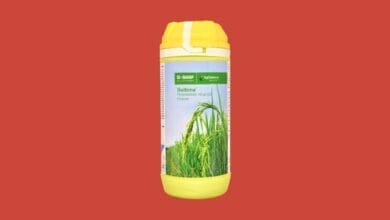Agriculture Article
Agriculture Article
-

Librel TMX2 Micronutrients — what it is, how it helps crops, and how to use it
Introduction of Librel TMX2 Micronutrients Micronutrients are the small-but-mighty players in crop nutrition — a pinch of zinc, iron or…
Read More » -

Disease in Tomato Plants: Causes, Symptoms, Prevention & Control
Introduction of Disease in Tomato Plants Growing tomatoes is rewarding, but nothing is more frustrating than seeing once healthy plants…
Read More » -

Stomp Herbicide: A Trusted Pre-Emergence Solution in 2026 as Powerful Weed Control
Introduction of Stomp Herbicide Weeds can severely compromise crop establishment, nutrient availability, and overall yield. For farmers looking for a…
Read More » -

Seltima Fungicide: A Complete Guide for Superior Disease Protection in Rice Crops
Introduction of Seltima Fungicide Rice farmers often struggle with fungal diseases that silently cut down yield and quality. Whether it’s…
Read More » -

Merivon® Fungicide – Advanced Protection for Healthier and More Productive Crops
Introduction of Merivon® Fungicide In modern agriculture, plant diseases can cause significant yield losses and compromise quality. Farmers need reliable…
Read More » -

Acrobat® Fungicide: The Reliable Shield Against Fungal Diseases
Introduction Of Acrobat® Fungicide Fungal diseases can drastically reduce crop yields and quality, posing a constant challenge for farmers.…
Read More » -

What is Sefina Insecticide?
Introduction Of Sefina Insecticide Sefina Insecticide is a modern foliar insecticide developed by BASF under the brand name Sefina®/Inscalis®. It…
Read More » -

What is Exponus insecticide?
Exponus insecticide Exponus is an advanced insecticide product from BASF India Limited powered by the active ingredient Broflanilide (300 g…
Read More » -

A Guide to Planting Bougainvillea: Tips for a Vibrant Garden
Planting Bougainvillaea: to make a Vibrant Garden Planting Bougainvillea, with its vibrant and strikingly colourful bracts, is a favourite among…
Read More » -

How to Start an Agriculture Blog: A Step-by-Step Guide
Agriculture Blog: Popular way to make money online In the digital age, blogging has become a powerful platform for sharing…
Read More »









